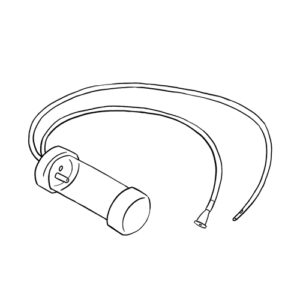Step 1: Anticipation

|
See the full description here
Summary:
Collaborate and form a team with your child. When you invest the time to form a strong team, children feel more comfortable and less anxious – this will help you complete the care with less stress – for you and your child.
Use these tips, from the start, to set the stage for a positive care procedure:
- Create the right moment: integrate the care in a routine.
- Alert your child to the needed care and communicate together.
- Form a team with your child: Encourage autonomy by offering realistic choices such as the method of distraction. Stay tuned to your child. Manage pain and anxiety, using distraction and positioning for comfort.
|
|
Step 2: Preparation
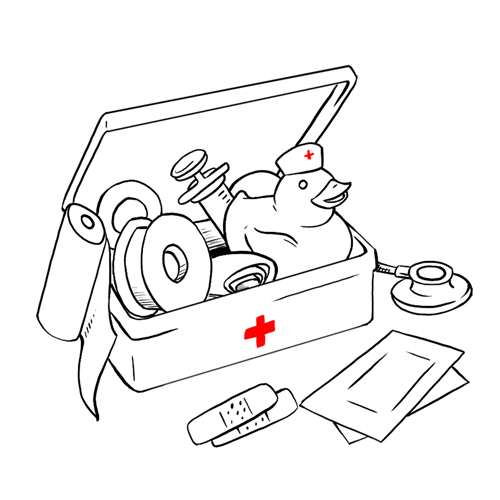
|
See the full description here
Summary:
- Prepare the environment: Identify a routine place for care. Close windows, doors and fans. Wash and dry the work surface and gather the needed materials for the care and to distract your child.
- Prepare your child: Get help if needed. Position your child for comfort to receive the care and start to use the selected distraction method.
- Prepare yourself: Find the right time when you are ready to provide the care safely. Review the list of care steps. Wash your hands.
Now that you are ready to start the care procedure, take the opportunity to encourage and praise your child.
|
|
Step 3: Procedure

|
See the full description here
Summary 3 key concepts:
- Safety: Carefully follow the care practice steps as you have been taught.
- Flexibility: Be ready to adjust according to your child’s reactions during the procedure. As needed, reposition or select an alternative distraction strategy. Follow your child’s pace and rhythm.
- Collaboration: Reassure your child, verbally and non-verbally. Acknowledge your child’s emotions and reactions. Help your child differentiate between the different sensations during a procedure.
|
|
Step 4: Prepare the materials

|
- Use a flat work surface that has been properly cleaned.
- Gather the material required.
- Leave the catheter in its envelope. Open one end of the envelope if using a new catheter.
- Pour cooled boiled water or sterile water into a clean container.
- Check that the canister for collecting secretions is correctly installed on the suction device and that it is less than ¾ full.
- Connect the suction tubing to the suction device.
Why ? This step ensures the safety and the continuity of the procedure.
|
|
Step 5: Set the pressure regulator of the suction device
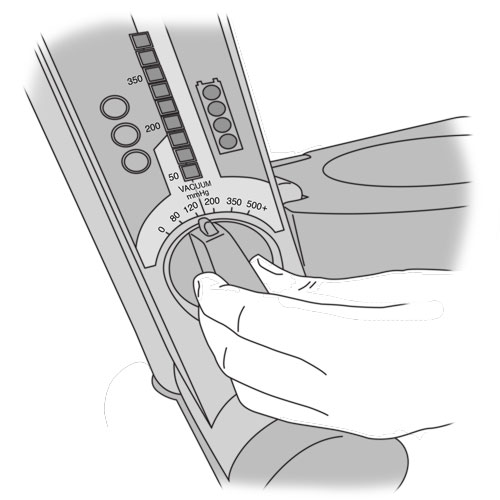
|
- Switch on the suction device.
- Adjust the pressure setting, following the directions of the healthcare team.
Why ? This step ensures that the correct pressure setting is used.
An excessively high pressure may damage the fragile lining of the airways.
A pressure that is too low may be ineffective in suctioning secretions.
|
|
Step 6: Connect the catheter to the suction tubing

|
- Take the free end of the suction tubing in one hand.
- With the other hand, connect the tip of the catheter to the suction tubing, taking care to keep the catheter in its protective envelope.
Why ? By connecting the catheter in this way, the tip stays clean, reducing contamination with bacteria.
|
|
Step 7: Position your child
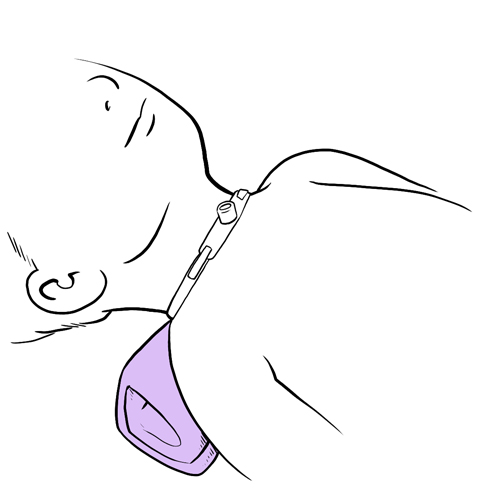
|
- Place your child in a comfortable position that easily allows you to perform this care.
- If your child is lying on his back, place a rolled towel underneath the shoulders (not underneath the neck) in order to extend your child’s head backwards so that the neck and the tracheostomy site is easily visible.
- If your child is in the semi-sitting position, gently extend your child’s head backwards so that the tracheostomy site is easily visible.
Why ? The preferred position is one that facilitates the procedure and optimizes the comfort of your child.
|
|
Step 8: Check the pressure level of the suction device and lubricate the catheter
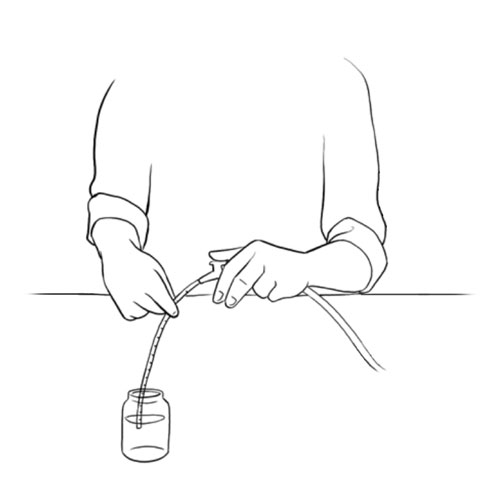
|
- Remove the suction catheter from the protective envelope without touching the tip of the catheter (the portion of the catheter that will go in the nose).
- Holding the catheter in the middle, dip the tip of the catheter into the lubrication solution (either cooled boiled water or sterile water) in order to aspirate a small amount of water.
- At the same time as you dip the catheter into the solution, close the valve with your thumb to create a vacuum effect and then remove your thumb to release the suction.

- Check that the water has been sucked into the catheter.
- Confirm that the pressure level indicated on the device is matched to the values recommended by the healthcare team.
- Remove the tip of the catheter from the water container.
- Keep the catheter in your hand, taking care that the tip does not touch anything.
- Ensure that excess drops of moisture do not fall into the trachea.
Why ? This step ensures that the catheter works and is lubricated.
This also verifies that there is no air leak in the aspiration device and that the pressure is correctly set.
Avoid contamination of the catheter by not touching the tip of the catheter with your hands.
Lubricating the catheter facilitates insertion in the tracheal cannula and reduces irritation to the trachea.
Excess drops of moisture on the catheter from the lubricating solutions can cause severe coughing in your child and may promote the development of a respiratory infection.
|
|
Step 9: Insert the catheter
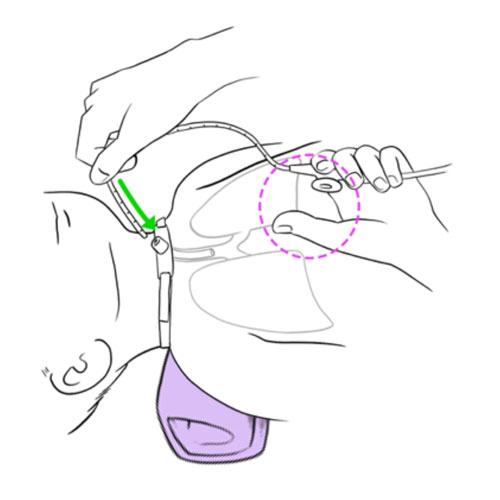
|
- Identify the maximal insertion length point on the catheter, using your previous measurements for the reference point.
- Ask your child to take slow deep breaths, if possible.
- Disconnect your child from the ventilator, if applicable.
- If there are many secretions visible in the tracheal cannula, block the suction valve as you quickly but gently insert the catheter into the tracheal cannula, preferably when your child takes a breath in.
- If there are no visible secretions in the tracheal cannula, then quickly but gently insert the catheter into the tracheal cannula, preferably when your child takes a breath in, without blocking the suction valve.
- Continue to insert the catheter to the reference point as previously determined; this number on the catheter should be aligned to the exterior rim entrance of the cannula connector.

- Ask your child to cough, if possible.
Why ? This method minimizes irritation to the trachea.
Taking deep breaths helps to minimize the lower airflow that takes place during aspiration of secretions.
Coughing can help dislodge secretions, allowing for easier removal.
|
|
Step 10: Aspirate the secretions

|
- Withdraw the catheter gently but quickly with one hand by rolling the catheter between your fingers as you continuously close the suction valve with the thumb of your other hand.
- The aspiration session should not last more than 5 seconds.
- Completely withdraw the catheter, slowly retracting the catheter by gently rolling it between your fingers. Avoid making large circular movements with the catheter to prevent injury to the tracheal walls. Do not move the catheter up and down.
- Reconnect your child to the ventilator, if applicable.
- Wipe excess secretions from the tracheal cannula with a non sterile gauze compress, if required.
- Encourage your child to take breaths to recuperate from the session.
Why ? Aspiration of tracheobronchial secretions should be less than 5 seconds short in duration as it blocks the passage of air into the lungs.
Rolling the catheter between your fingers keeps it from sticking to the wall of the cannula.
Continuous aspiration (by blocking the suction valve) optimizes removal of secretions.
Avoid moving the tracheal cannula during aspiration to minimize irritation to the trachea.
|
|
Step 11: Rinse the catheter

|
- Wipe the outside of the catheter using a non sterile gauze or compress to remove secretions.
- Dip the tip of the catheter into the cooled boiled water or sterile water container and aspirate a small quantity of water to clean the inside of the catheter (closing the suction valve of the catheter with your thumb).
- Remove the catheter from the water container.
Why ? By wiping clean the outside of the catheter first, you avoid contaminating the water solution before rinsing the inside of the catheter.
Aspirating water into the catheter helps to remove and residual secretions from the inside the catheter.
|
|
Step 12: Repeat the aspiration, if needed

|
- Allow your child to rest for at least 30 seconds between each aspiration.
- Repeat the procedure 2 to 3 times as needed if secretions are still present.
- Rinse the catheter with water (boiled or sterile) between each aspiration.
- At the end of the procedure, encourage your child to take deep breaths, if able.
- Advise your healthcare team if there is a change in the colour, consistency and/or amount of secretions.
Why ? This step allows for effective removal of secretions from the trachea.
A short rest between each aspiration allows your child to breathe.
Breathing deeply at the end allows your child to relax and recover.
A change in the secretions may indicate a change in your child’s health (eg, beginning of a respiratory tract infection).
|
|
Step 13: Clean the catheter

|
Keeping the suction valve closed with your thumb:
- Thoroughly rinse the catheter one last time by aspirating water (boiled or sterile) until no more secretions are visible inside the catheter and the suction tubing.
- If secretions remain inside the catheter, aspirate a small amount of 3% hydrogen peroxide (previously poured into a small clean container) until the secretions are removed.
- Aspirate water (boiled or sterile) and air into the catheter to rinse and dry the inside of the catheter.
- Wipe the outside of the catheter with an alcohol swab.
- Let the catheter air dry.
- Disconnect the catheter from the suction tubing.
Why ? This step is needed to keep the catheter clean and ready for next use and to limit contamination that might cause infections.
|
|
Step 14: Store the equipment

|
- Turn off the suction device.
- Place the catheter back into the envelope or a clean, sealed container.
- If necessary, empty the secretions from the canister into the toilet.
- Discard the rinsing and lubricating solutions used during the aspiration procedure.
- Rinse the containers used to hold the solutions with water and let air dry.
- Store the containers with the rest of the aspiration equipment.
Why ? This step ensures that the equipment is clean, in good condition and ready to use for the next episode of aspiration.
|
|
Step 15: Recovery
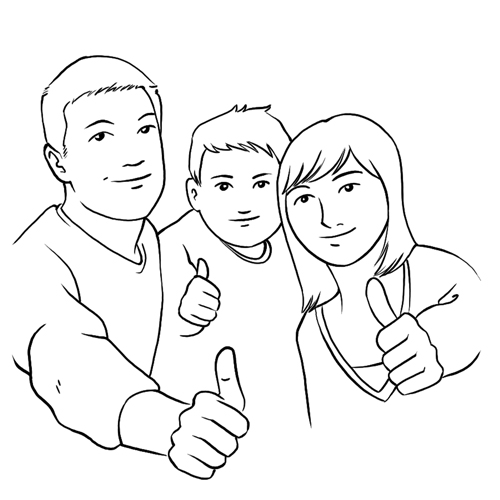
|
See the full description here
Summary:
The treatment is finished. Wash your hands again.
Be prepared to recognize the challenges faced and to provide positive feedback. Help your child recognize his/her strengths. Acknowledge the collaborative teamwork.
- Listen to what your child says about the parts of the procedure that were difficult or painful.
- Comfort your child and recognize your child’s collaboration with positive feedback.
- Highlight your child’s specific strengths that helped make the procedure positive.
- Discuss with your child what might be done the same or differently the next time the care is needed.
- Keep your promises if you have promised a reward, follow through.
- Reward yourself too.
|
|
![]()

